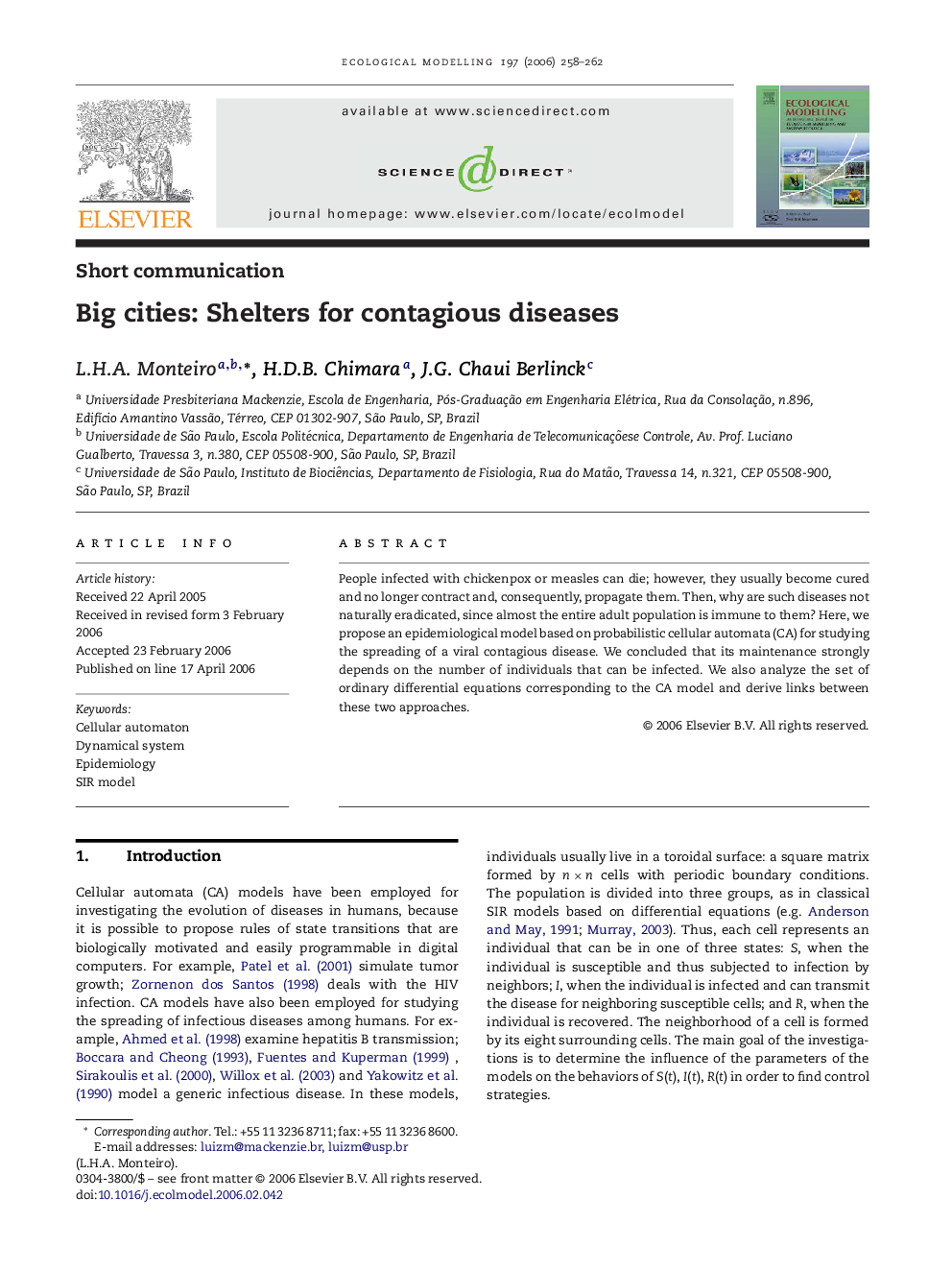| Article ID | Journal | Published Year | Pages | File Type |
|---|---|---|---|---|
| 4378913 | Ecological Modelling | 2006 | 5 Pages |
Abstract
People infected with chickenpox or measles can die; however, they usually become cured and no longer contract and, consequently, propagate them. Then, why are such diseases not naturally eradicated, since almost the entire adult population is immune to them? Here, we propose an epidemiological model based on probabilistic cellular automata (CA) for studying the spreading of a viral contagious disease. We concluded that its maintenance strongly depends on the number of individuals that can be infected. We also analyze the set of ordinary differential equations corresponding to the CA model and derive links between these two approaches.
Related Topics
Life Sciences
Agricultural and Biological Sciences
Ecology, Evolution, Behavior and Systematics
Authors
L.H.A. Monteiro, H.D.B. Chimara, J.G.Chaui Berlinck,
